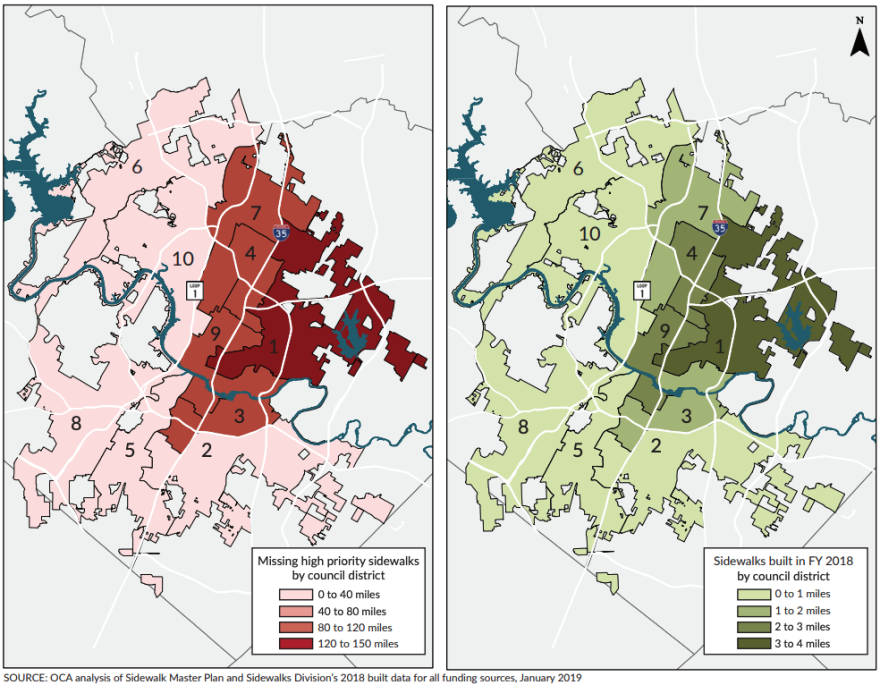Do you live in a neighborhood where a sidewalk ends randomly for no apparent reason? Have you ever gotten off a bus in a wheelchair only to be confronted with a drainage ditch? Perhaps you risk your life every time you travel down an unprotected bicycle path that's dangerously close to fast-moving traffic. Or maybe you'd simply like to see a popular nature path widened into a multi-use urban trail.
Austin officials say they want to know.
The city is rewriting its years-old plans mapping out where to build or improve Austin's sidewalks, urban trails and bicycle paths. Part of the reason is because officials have more money to spend on them: voters have approved more than $300 million for the so-called "active transportation" plans included in a series of bond elections since 2016.
"There's a very super-localized level of knowledge when you live in a neighborhood and you say, 'This area right here is the problem,'" said John Eastman, who oversees sidewalk construction for Austin's Public Works Department.
Public feedback for the first phase of outreach on the new master plans is open until Sept. 26. People who are interested in participating in the process can fill out an online survey in English or Spanish. They can also ask for a copy of the survey by mail by calling 512-974-7182.

Building out the city's entire 5,000-mile sidewalk network — which is only about half complete — would cost about $1.64 billion, according to the 2016 Sidewalk Master Plan. So officials have to prioritize where to spend their limited resources.
Austin recently completed the first half of its 370-mile "All Ages and Abilities" bicycle path network, a goal originally set for 2020. The 2014 Bicycle Master Plan estimated the cost of finishing the network at about $150 million.
The city's 2014 Urban Trails Master Plan recommended expanding what was then just 30 miles of urban trails to 407 miles at a cost of about $2 million per mile. Urban trails cost more than your average path in the wilderness because they're supposed to be at least 12 feet wide and meet accessibility guidelines under the Americans with Disabilities Act.
Neighborhoods east of Interstate 35 are among those most in need of sidewalks, bike paths and urban trails, a result of the city's historic policies to racially segregate and diminish Black and brown populations.
City staff are vowing to place racial equity at the center of their planning process and are seeking to address skepticism from communities that have long been deprived of public spending on pedestrian and bicycle infrastructure. Twelve "community ambassadors" have been hired to conduct outreach.
A city audit from 2018 found Austin's Public Works Department had been focusing sidewalk spending in East Austin for well over a decade, but the same audit also highlighted the gaping disparities that remain. For example, Northeast Austin's District 1, whose population is less than one-quarter non-Hispanic white, needs at least 120 miles of high priority sidewalks.

The audit also found sidewalks built by the city don't always receive accessibility inspections.












